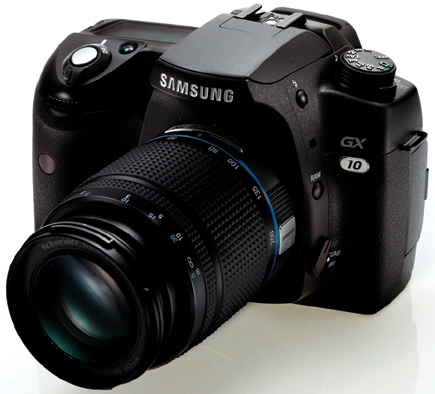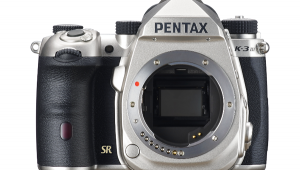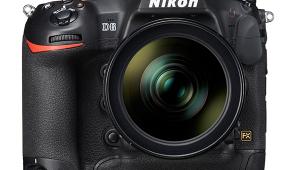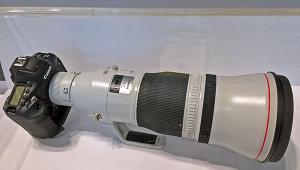photokina Special Coverage; Digital SLR Cameras Page 2
While it's similar in many respects to the 6-megapixel K100D (also with built-in Image Stabilizer), the K10D was intended for a more serious photographer who appreciates a more rugged body; higher resolution; greater speed and burst depth (3 fps for an "unlimited" number of best JPEGs); faster tracking focus; a high capacity lithium ion battery; and extra analog controls that reduce the need for hunting through the electronic menu. The K10D also provides two entirely new operating modes. Select SV mode and you can change ISO very quickly, simply by rotating the rear command dial. Switch to TAv and you can set a desired shutter speed and aperture; the camera automatically adjusts the ISO as required for correct exposure. The Pentax K10D should be a strong contender in the 10-megapixel category particularly because of its attractive price and compatibility with a wide range of manual focus and AF lenses.
Nearly identical to the K10D, and expected to sell for the same price, the new Samsung Digimax GX-10 differs slightly; it's 0.16" thicker, offers a few extra white balance options, and provides raw capture only in DNG format (not in PEF). As well, the software differs; Samsung packages the GX-10 with Digimax Master and Digimax DNG Converter while Pentax provides their PHOTO Browser 3 and PHOTO Laboratory 3 programs. Compatible with K-mount manual focus and AF lenses, the Samsung Digimax GX-10 should also support the new Pentax DA* series, with ultrasonic focus motors, to be available in March of 2007.
 |
|
|
And finally, there was one other D-SLR camera exhibited at photokina, under glass, but without any specifications as to resolution or features. Olympus showed a "concept model" of their future pro camera that will be the successor to the Olympus E-1. Even the (somewhat radical) styling of the mock-up model is tentative and the final design may be entirely different. However, we do know that Olympus will be marketing an affordable 10-megapixel D-SLR in Europe and Asia, using a Four Thirds format (17.3x13.0mm) CCD sensor. That provides an indication that the new pro body will provide at least comparable resolution, although Olympus America reps could not provide any information in that respect. Expect this new E-series pro model to be announced sometime in 2007, at a price that is likely to be competitive with other pro D-SLRs.
 |
|
|
- Log in or register to post comments

















































